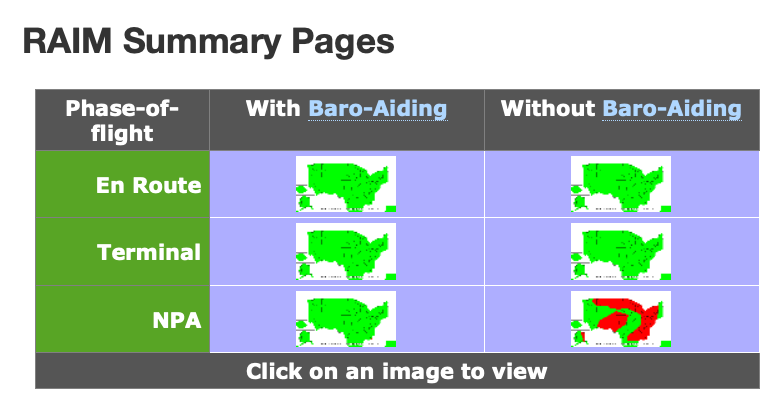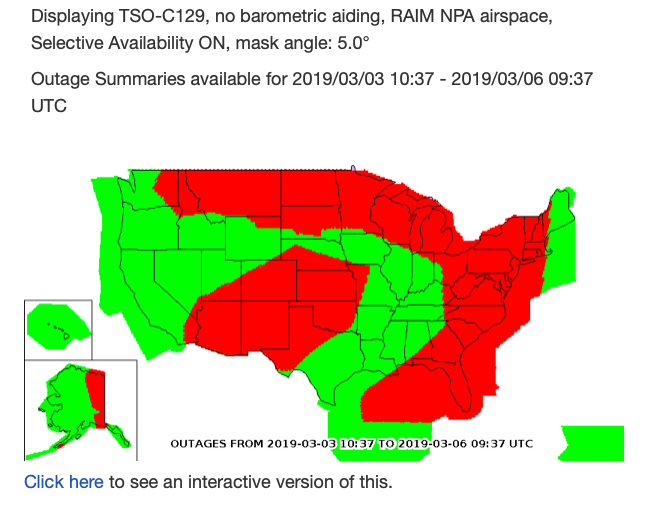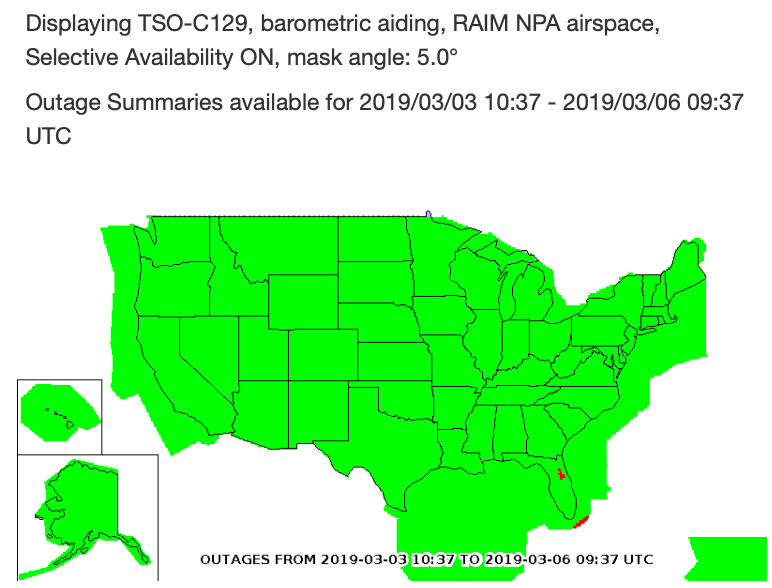RAIM and the Service Availability Prediction Tool
Non-WAAS GPS units (and WAAS units if WAAS is not available) have the ability to self-detect whether they can accurately depict the aircraft’s position. This is called Receiver Autonomous Integrity Monitoring (RAIM). The GPS does a bunch of calculations using various combinations of GPS satellites and if the answers match, you are good to go. If they don’t match, then you will get an alert and must rely on ground-based navigation to complete your flight.
The GPS requires five satellites to make the calculations. If the unit has baro-aiding, and most do, then they only need four. Since satellites follow a know orbit, the availability of four or five for doing calculations can be predicted in advance. Barring failure of the satellite, you can know up to three days in advance of your trip whether the GPS signals will be adequate for the en route, terminal, or approach phase of the flight. The Service Availability Prediction Tool (SAPT) website has maps the display service availability.
As you can see from the maps, if you have a unit with baro-aiding, then RAIM outages are no an issue. With baro-aiding there are occasionally some areas of south Florida that have issues.





